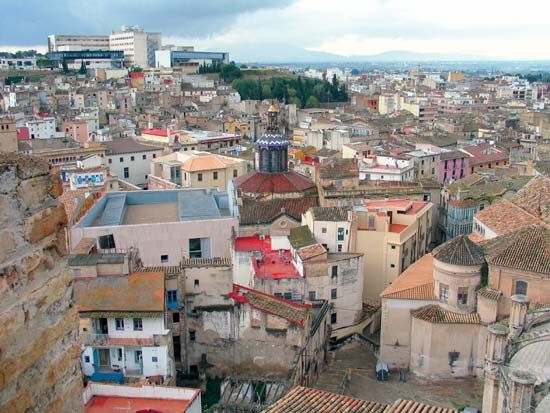Tortosa
Tortosa, city, Tarragona provincia (province), in the comunidad autónoma (autonomous community) of Catalonia, northeastern Spain, on the Ebro River, southwest of the city of Tarragona. Tortosa originated as the Dertosa of the Iberians; replanned by the Roman general Scipio Africanus, it was transformed into a municipium (town) by Julius Caesar and given colonial privileges by the emperor Augustus as Colonia Julia Augusta Dertosa. Under the Moors it was an important frontier city of the Caliphate of Córdoba and was for some time the capital of a small, independent Moorish kingdom. Ramón Berenguer IV, Count of Barcelona, captured Tortosa in 1148 and granted it a highly privileged charter. A Moorish attempt to recapture the city in 1149 was repulsed largely because of heroic fighting by the women. In the last period of the Spanish Civil War (1939), Tortosa suffered serious damage, but it has been largely restored. Important landmarks include the Gothic cathedral (1347), with a Baroque facade added in 1705; a Renaissance palace; and the remains of a medieval castle. Tortosa has a technical school and an observatory.
The city overlooks a wide plain of rice plantations, orchards, and olive and almond trees. Olive oil is the principal product. Manufactures include chemical fertilizer, soap, cement, pharmaceuticals, hats, and knitwear; there are also rice milling, flour milling, and sawmilling. Pop. (2007 est.) mun., 34,832.









